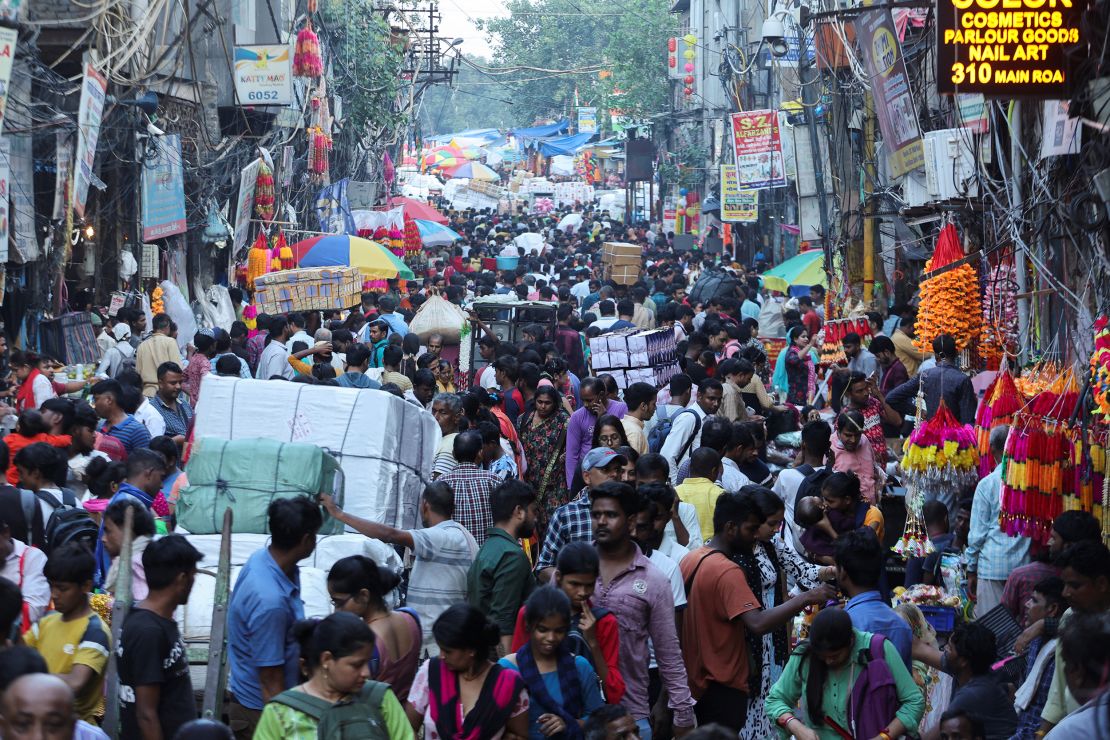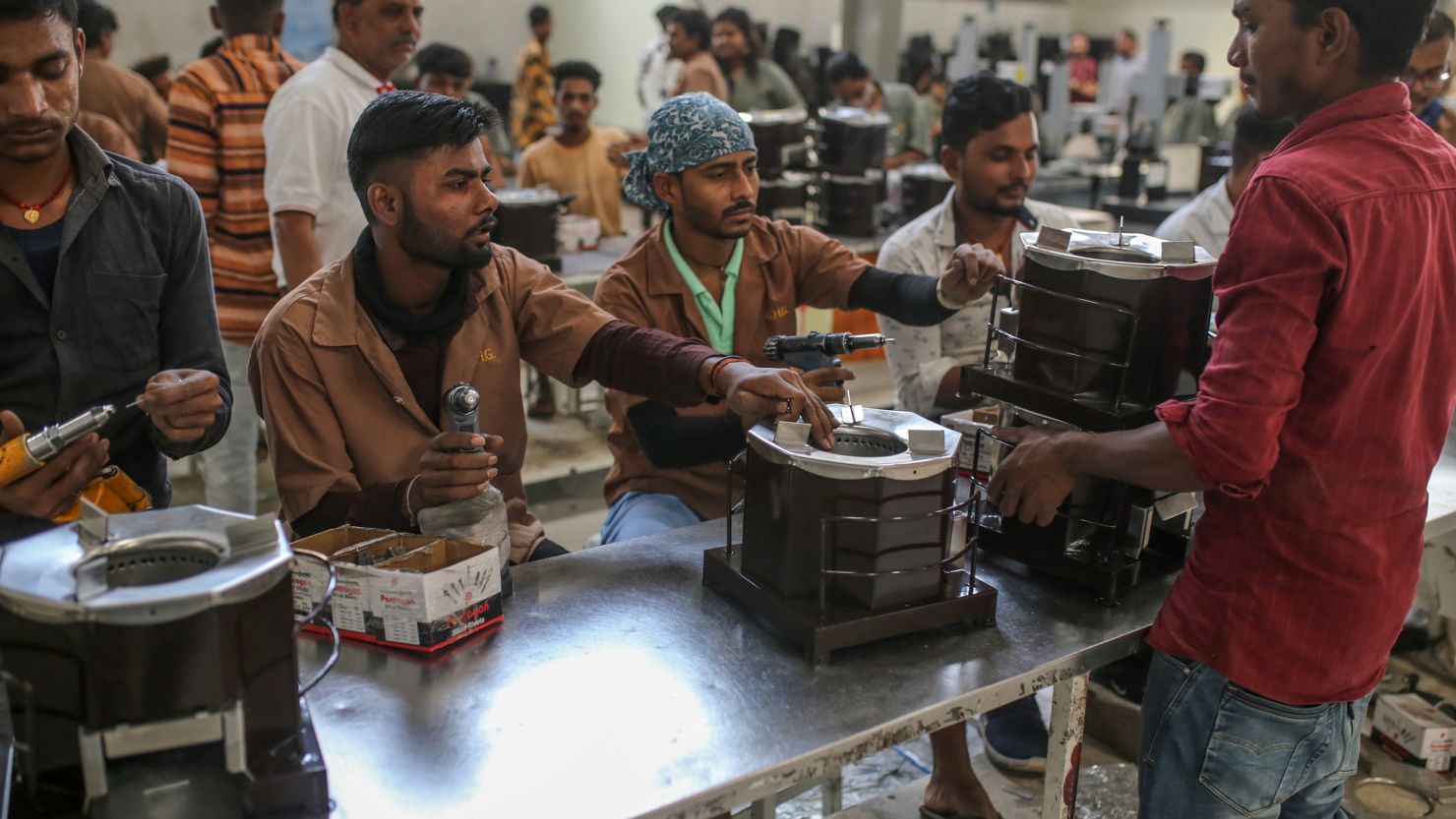Editor’s Note: David A. Andelman, a contributor to CNN, twice winner of the Deadline Club Award, is a chevalier of the French Legion of Honor, author of “A Red Line in the Sand: Diplomacy, Strategy, and the History of Wars That Might Still Happen” and blogs at Andelman Unleashed. He formerly was a correspondent for The New York Times and CBS News in Europe and Asia. The views expressed in this commentary are his own. View more opinion at CNN.
Asia is hurtling toward a tectonic power shift headlined by ever more rapid changes in population growth. The West, especially the United States, better be prepared.
A dramatic demographic shift is underway after China’s population shrank in 2022 for the first time in six decades. Meanwhile, India, with its continued population growth, is projected to surpass China as the world’s most populous country by UN estimates as soon as April.

The latest statistics show that China is increasingly coming face-to-face with its one-child policy, which officially ended in 2016 after more than three decades. The policy introduced a number of challenges; perhaps the most paramount is the 4-2-1 problem, where one working individual, by virtue of being an only child, ends up having to support four grandparents and two parents — a huge drain on the working population. It also puts a strain on China’s government-backed pension system.
This crisis is the fruit of a policy designed by the Communist Party to slow population growth and promulgated in an open letter on September 25, 1980, that no family would be allowed to have more than one child. The policy also led to abortions of female fetuses, abandonment and even infanticide due to the preference for sons, and the ratio between men and women eventually began to skew.
Within a decade, the fertility rate had plummeted below 2.1 — a rate sustaining zero population growth.
By 2016, families were officially allowed to have two children, then three children by 2021, and no fines were imposed on families regardless of their size. By then, however, it was too late to reverse the catastrophic demographic trend.
Last year, China’s National Bureau of Statistics reported that new births fell for the sixth straight year to 9.56 million, while nationwide deaths reached 10.6 million people. New births also mean fewer consumers, eventually a shrinking workforce, a smaller next generation and fewer working Chinese to support their children and retired family members. It is a spiral that may be impossible to reverse.
At the same time, the Covid-19 pandemic and the government’s stringent zero-Covid policies also exacerbated a plunge in the number of marriages. The official China Statistical Yearbook 2022 showed the number of marriages in China dropped to the lowest level on record in 2021, at 7.6 million people.
Hidden in these numbers are some troubling realities for China and for the world economy.
A falling Chinese population means lower domestic consumption, which holds the prospect of seriously affecting companies trying to do business there selling to what will inevitably be a shrinking Chinese domestic market. Consumer brands such as Starbucks, Nike and Under Armour and tech and auto companies such as Apple, Intel, Tesla, General Motors and Ford generate a substantial amount of their global income from Chinese consumers. Tesla makes half of its electric cars in China. Until 2019, Apple had about half of its assembly lines in China, though these numbers began to fall substantially in the ensuing years, hitting 36% last year.
These production figures point to an even more dramatic problem for China as its demographic spiral also means a rapidly shrinking pool of cheap, skilled labor. Western companies are already looking elsewhere, although China’s manufacturing might be difficult to replicate at the same scale in the near term.
India, whose population is projected to pass China’s, is the logical substitute. While China will continue shrinking, India will continue to grow, likely peaking in 2064 at 1.7 billion, up from 1.42 billion today — nearly 50% larger than the projected population of China at that point. In theory, this would be the go-to nation for cheap and even more highly educated labor, especially for high-tech industries.
But there is a huge problem here. The bulk of well-educated tech workers are in the west and south of India, where the population growth is the least intense.
Places such as Uttar Pradesh in the north — with 200 million people — are where the huge burst in population is taking place.
But manufacturing is lagging in Uttar Pradesh, which has 17% percent of India’s population but just 9% of its industrial jobs. Moreover, many of India’s most rapidly growing regions are barely accessible for modern commercial transport, and the population is marginally educated. India is on a tear to remedy these inequities, but it will take awhile.

Prime Minister Narendra Modi’s goal is to make India a $5 trillion economy by next year, with Uttar Pradesh a $1 trillion economy in 2027. To meet these goals, he’s going to need a lot of help, much of it from abroad.
Already, Apple has begun to shift a slice of its iPhone production from China to India. One in 4 iPhones could be made in India by 2025. Walmart is looking to triple its exports of India-made goods to $10 billion by 2027. All of this will place Modi and his country in direct — and potentially toxic competition — with Xi Jinping and China.
Inherent in the advantage of replacing China by India is that the West will be replacing an oligarchical autocracy with a more-or-less Western-style democracy as its principal economic partner.
Of course, that will leave China increasingly with its own back to the wall, defensive and hostile, faced by a democratic India with a Western tilt. In December, the United States added 36 Chinese companies to a blacklist for trade in high-end technologies after tightening rules on the sale of semiconductor technology to China.
The Biden administration is still making some efforts to heal the open wounds with China — with Treasury Secretary Janet Yellen meeting with Chinese Vice Premier Liu He last week. Liu had just made a big pitch at the World Economic Forum in Davos, Switzerland, for more investment in China. But this may be too little, too late.
And there is clearly little interest for the leaders of China and India to mend relations anytime soon. At the Shanghai Cooperation Organization summit in Samarkand, Uzbekistan in September, there was no bilateral meeting, no publicly recorded smile or even handshake between Xi and Modi, leading former Chinese diplomat Shi Jiangtao to write in the South China Morning Post, “The geopolitical split that is taking place between China and India could not be more obvious. … President Xi Jinping and Prime Minister Narendra Modi have not met or spoken since a military stand-off began in the disputed Himalayan border region in May 2020.” (Xi and Modi did, however, chat briefly at the G20 dinner in Bali in November.)
As India gears up to displace China as the world’s most populous nation, the United States and the West may be pushed into choosing sides. It is pressure that needs to be resisted as long as possible in the interest of political stability, not to mention economic pragmatism.


